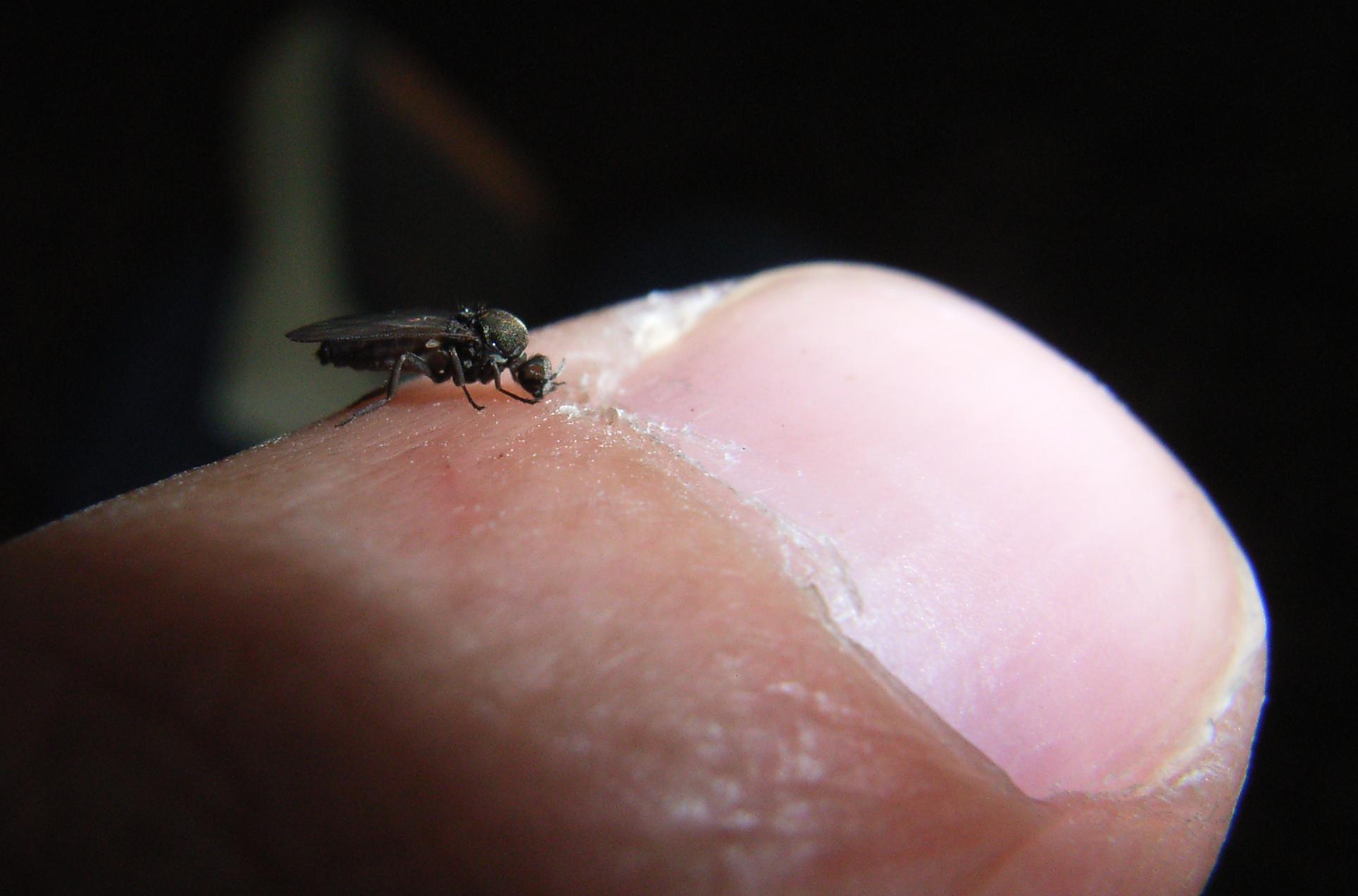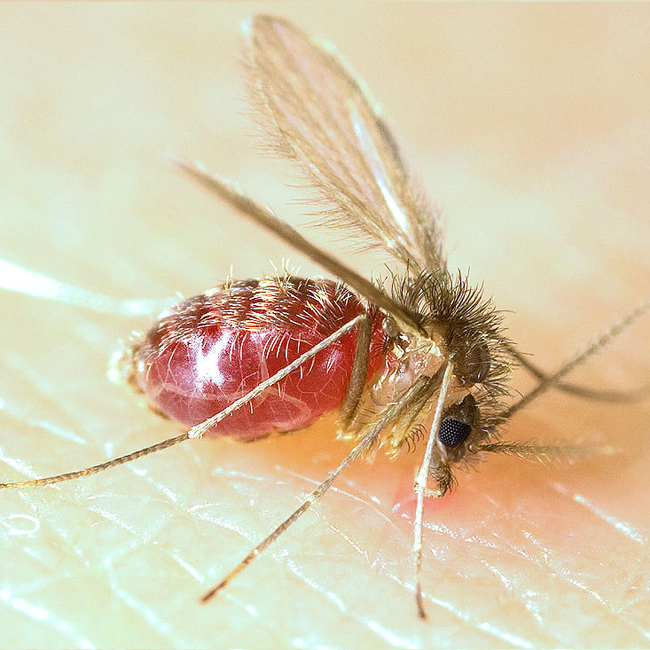|
Sandflies
Sandfly (or sand fly) is a colloquial name for any species or genus of flying, biting, blood-sucking dipteran (fly) encountered in sandy areas. In the United States, ''sandfly'' may refer to certain horse flies that are also known as "greenheads" (family Tabanidae), or to members of the family Ceratopogonidae. The bites usually result in a small, intensely itchy bump or welt, the strength of which intensifies over a period of 5-7 days before dissipating. Moderate relief is achieved with varying success through the application of over the counter products such as Benadryl (ingested) or an analgesic cream such as After Bite (applied topically). Outside the United States, ''sandfly'' may refer to members of the subfamily Phlebotominae within the Psychodidae. Biting midges (Ceratopogonidae) are sometimes called sandflies or no-see-ums (no-see-em, noseeum). New Zealand sandflies are in the genus ''Austrosimulium'', a type of black fly. In the various sorts of sandfly only the fema ... [...More Info...] [...Related Items...] OR: [Wikipedia] [Google] [Baidu] |
Black Fly
A black fly or blackfly (sometimes called a buffalo gnat, turkey gnat, or white socks) is any member of the family Simuliidae of the Culicomorpha infraorder. It is related to the Ceratopogonidae, Chironomidae, and Thaumaleidae. Over 2,200 species of black flies have been formally named, of which 15 are extinct. They are divided into two subfamilies: Parasimuliinae contains only one genus and four species; Simuliinae contains all the rest. Over 1,800 of the species belong to the genus ''Simulium''. Most black flies gain nourishment by feeding on the blood of mammals, including humans, although the males feed mainly on nectar. They are usually small, black or gray, with short legs, and antennae. They are a common nuisance for humans, and many U.S. states have programs to suppress the black fly population. They spread several diseases, including river blindness in Africa (''Simulium damnosum'' and ''S. neavei'') and the Americas (''S. callidum'' and ''S. metallicum'' in Central Am ... [...More Info...] [...Related Items...] OR: [Wikipedia] [Google] [Baidu] |
Austrosimulium
''Austrosimulium'' is a genus of 31 species of black flies that are distributed in Australia and New Zealand. There are 2 subgenera: ''Austrosimulium'' whose species are principally from New Zealand, and ''Novaustrosimulium'' which are exclusively Australian. ''Austrosimulium'' is a sister genus to the monospecific '' Paraustrosimulium'' of South America. Some species are known to spread the protozoan blood parasite '' Leucocytozoon tawaki'' in penguins. In New Zealand, where they are known as ''sandflies'' or namu (in Māori from Proto-Austronesian *''ñamuk'' "mosquito", compare with ms, nyamuk), three species – '' A. australense'', '' A. tillyardianum'' and '' A. ungulatum'' – bite humans. Species *Subgenus ''Austrosimulium'' Tonnoir, 1925 **'' A. albovelatum'' Dumbleton, 1973 **'' A. alveolatum'' Dumbleton, 1973Craig, D.A.; Craig, R.E.G.; Crosby, T.K. 2012Simuliidae (Insecta: Diptera).''Fauna of New Zealand'', (68) **'' A. australense'' ( Schiner, 1868) **'' A. bicorne' ... [...More Info...] [...Related Items...] OR: [Wikipedia] [Google] [Baidu] |
Phlebotominae
The Phlebotominae are a subfamily of the family Psychodidae. In several countries, their common name is sandfly; but that name is also applied to other flies. The Phlebotominae include many genera of blood-feeding (hematophagous) flies, including the primary vectors of leishmaniasis, bartonellosis and pappataci fever. In the New World, leishmaniasis is spread by sand flies in the genus ''Lutzomyia'', which commonly live in caves, where their main hosts are bats. In the Old World, sand flies in the genus ''Phlebotomus'' spread leishmaniasis. Phlebotomine females, and only females, suck blood from various mammals, reptiles and birds. Some species are selective, whereas others bite any suitable host they find. Some species can produce one clutch of eggs before their first blood meal; such females are said to practise autogenous or partly autogenous reproduction. Other species need a blood meal before they can produce any eggs at all; they are said to practise anautogenous reproduct ... [...More Info...] [...Related Items...] OR: [Wikipedia] [Google] [Baidu] |
Lutzomyia
''Lutzomyia'' is a genus of phlebotomine sand flies consisting of nearly 400 species, at least 33 of which have medical importance as vectors of human disease. Species of the genus ''Lutzomyia'' are found only in the New World, distributed in southern areas of the Nearctic and throughout the Neotropical realm. ''Lutzomyia'' is one of the two genera of the subfamily Phlebotominae to transmit the Leishmania parasite, with the other being ''Phlebotomus'', found only in the Old World. ''Lutzomyia'' sand flies also serve as vectors for the bacterial Carrion's disease and a number of arboviruses. Evolution The genus, named after Adolfo Lutz, is known from the extinct Burdigalian (20-15 mya) species ''Lutzomyia adiketis'' found as a fossil in Dominican amber on the island of Hispaniola. It is thought that species in the genus ''Lutzomyia'' all originated in the lowland forests to the east of the Andes mountain range, and that their radiation throughout the Neotropics was sparked by ... [...More Info...] [...Related Items...] OR: [Wikipedia] [Google] [Baidu] |
Phlebotomus
''Phlebotomus'' is a genus of " sand flies" in the Diptera family Psychodidae. In the past, they have sometimes been considered to belong in a separate family, Phlebotomidae, but this alternative classification has not gained wide acceptance. Epidemiology In the Old World, ''Phlebotomus'' sand flies are primarily responsible for the transmission of leishmaniasis, an important parasitic disease, while transmission in the New World, is generally via sand flies of the genus ''Lutzomyia''. The protozoan parasite itself is a species of the genus ''Leishmania''. Leishmaniasis normally finds a mammalian reservoir in rodents and other small animals such as canids ( canine leishmaniasis) and hyraxes. The female sand fly carries the ''Leishmania'' protozoa from infected animals after feeding, thus transmitting the disease, while the male feeds on plant nectar. The parasite ''Leishmania donovani'' is the main causative agent of visceral leishmaniasis (VL) in India, Nepal, and Bangladesh ... [...More Info...] [...Related Items...] OR: [Wikipedia] [Google] [Baidu] |
Leishmaniasis
Leishmaniasis is a wide array of clinical manifestations caused by parasites of the trypanosome genus ''Leishmania''. It is generally spread through the bite of phlebotomine sandflies, ''Phlebotomus'' and ''Lutzomyia'', and occurs most frequently in the tropics and sub-tropics of Africa, Asia, the Americas, and southern Europe. The disease can present in three main ways: cutaneous, mucocutaneous, or visceral. The cutaneous form presents with skin ulcers, while the mucocutaneous form presents with ulcers of the skin, mouth, and nose. The visceral form starts with skin ulcers and later presents with fever, low red blood cell count, and enlarged spleen and liver. Infections in humans are caused by more than 20 species of ''Leishmania''. Risk factors include poverty, malnutrition, deforestation, and urbanization. All three types can be diagnosed by seeing the parasites under microscopy. Additionally, visceral disease can be diagnosed by blood tests. Leishmaniasis can be partl ... [...More Info...] [...Related Items...] OR: [Wikipedia] [Google] [Baidu] |
Leishmaniasis
Leishmaniasis is a wide array of clinical manifestations caused by parasites of the trypanosome genus ''Leishmania''. It is generally spread through the bite of phlebotomine sandflies, ''Phlebotomus'' and ''Lutzomyia'', and occurs most frequently in the tropics and sub-tropics of Africa, Asia, the Americas, and southern Europe. The disease can present in three main ways: cutaneous, mucocutaneous, or visceral. The cutaneous form presents with skin ulcers, while the mucocutaneous form presents with ulcers of the skin, mouth, and nose. The visceral form starts with skin ulcers and later presents with fever, low red blood cell count, and enlarged spleen and liver. Infections in humans are caused by more than 20 species of ''Leishmania''. Risk factors include poverty, malnutrition, deforestation, and urbanization. All three types can be diagnosed by seeing the parasites under microscopy. Additionally, visceral disease can be diagnosed by blood tests. Leishmaniasis can be partl ... [...More Info...] [...Related Items...] OR: [Wikipedia] [Google] [Baidu] |
Ceratopogonidae
Ceratopogonidae is a family of flies commonly known as no-see-ums, or biting midges, generally in length. The family includes more than 5,000 species, distributed worldwide, apart from the Antarctic and the Arctic. Ceratopogonidae are holometabolous, meaning their development includes four life stages: egg, larva, pupa, and imago or adult. Most common species in warmer climates will take about two to six weeks to complete a life cycle. Both adult males and females feed on nectar. Most females also feed on the blood of vertebrates, including humans, to get protein for egg-laying. Their bites are painful, and can cause intensely itchy lesions. Their mouthparts are well-developed for cutting the skin of their hosts. Some species prey on other insects. Larvae need moisture to develop, but also air and food. They are not strictly aquatic or terrestrial. Some species within the biting midges are thought to be predatory on other small insects. Particularly mosquito larvae have been ... [...More Info...] [...Related Items...] OR: [Wikipedia] [Google] [Baidu] |
Diptera
Flies are insects of the order Diptera, the name being derived from the Greek δι- ''di-'' "two", and πτερόν ''pteron'' "wing". Insects of this order use only a single pair of wings to fly, the hindwings having evolved into advanced mechanosensory organs known as halteres, which act as high-speed sensors of rotational movement and allow dipterans to perform advanced aerobatics. Diptera is a large order containing an estimated 1,000,000 species including horse-flies, crane flies, hoverflies and others, although only about 125,000 species have been described. Flies have a mobile head, with a pair of large compound eyes, and mouthparts designed for piercing and sucking (mosquitoes, black flies and robber flies), or for lapping and sucking in the other groups. Their wing arrangement gives them great maneuverability in flight, and claws and pads on their feet enable them to cling to smooth surfaces. Flies undergo complete metamorphosis; the eggs are often laid on the l ... [...More Info...] [...Related Items...] OR: [Wikipedia] [Google] [Baidu] |
India
India, officially the Republic of India (Hindi: ), is a country in South Asia. It is the seventh-largest country by area, the second-most populous country, and the most populous democracy in the world. Bounded by the Indian Ocean on the south, the Arabian Sea on the southwest, and the Bay of Bengal on the southeast, it shares land borders with Pakistan to the west; China, Nepal, and Bhutan to the north; and Bangladesh and Myanmar to the east. In the Indian Ocean, India is in the vicinity of Sri Lanka and the Maldives; its Andaman and Nicobar Islands share a maritime border with Thailand, Myanmar, and Indonesia. Modern humans arrived on the Indian subcontinent from Africa no later than 55,000 years ago., "Y-Chromosome and Mt-DNA data support the colonization of South Asia by modern humans originating in Africa. ... Coalescence dates for most non-European populations average to between 73–55 ka.", "Modern human beings—''Homo sapiens''—originated in Africa. Then, int ... [...More Info...] [...Related Items...] OR: [Wikipedia] [Google] [Baidu] |
Rabies
Rabies is a viral disease that causes encephalitis in humans and other mammals. Early symptoms can include fever and tingling at the site of exposure. These symptoms are followed by one or more of the following symptoms: nausea, vomiting, violent movements, uncontrolled excitement, fear of water, an inability to move parts of the body, confusion, and loss of consciousness. Once symptoms appear, the result is virtually always death, regardless of treatment. The time period between contracting the disease and the start of symptoms is usually one to three months but can vary from less than one week to more than one year. The time depends on the distance the virus must travel along peripheral nerves to reach the central nervous system. Rabies is caused by lyssaviruses, including the rabies virus and Australian bat lyssavirus. It is spread when an infected animal bites or scratches a human or other animals. Saliva from an infected animal can also transmit rabies if the saliva come ... [...More Info...] [...Related Items...] OR: [Wikipedia] [Google] [Baidu] |




_(10144905255).jpg)
